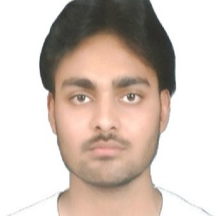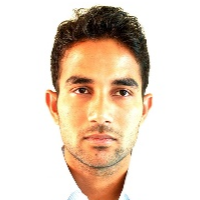International Journal of Intelligent Systems and Applications (IJISA)
IJISA Vol. 7, No. 8, 8 Jul. 2015
Cover page and Table of Contents: PDF (size: 535KB)
Modelling and Simulation of Hydro Power Plant using MATLAB & WatPro 3.0
Full Text (PDF, 535KB), PP.1-8
Views: 0 Downloads: 0
Author(s)
Index Terms
Reverse Osmosis, Graphene Membrane, Chlorine, Electrolysis, Pump Control, Fouling Detection, TiO2 Nanoparticles
Abstract
Increase in demand of electricity and clean drinking water has produced a chronic need of a promising and reliable technology for the supply of both commodities, which should be entirely based on renewable sources of energy. The authors, in their previous work, had proposed a design of a hybrid power plant which used graphene membrane for power generation using reverse osmosis process. The proposal included removal of arsenic, poorly biodegradable pollutants using TiO2 nanoparticles. Chlorine production using the process of electrolysis. The plant was also electronically implemented and included pump control, fouling detection modules and decision module for the volume of effluents to be discharged. The performance of a power system is essential to be analyzed for control, stabilization and efficient modelling. In the present research paper, simulation model of the hybrid plant is analyzed. The chemical behavior is analyzed with 'Watpro 3.0' industrial software and turbine governance system is studied via MATLAB. This plant is a potential replacement of chemical purification techniques with high overhead and excess cost. It is a better, efficient, safe and reliable system to produce clean and safe drinking water and electricity simultaneously.
Cite This Paper
Jahnvi Tiwari, Ashish Kumar Singh, Ashish Yadav, Rakesh Kumar Jha, "Modelling and Simulation of Hydro Power Plant using MATLAB & WatPro 3.0", International Journal of Intelligent Systems and Applications(IJISA), vol.7, no.8, pp.1-8, 2015. DOI:10.5815/ijisa.2015.08.01
Reference
[1]Germeles, A. E. "Forced plumes and mixing of liquids in tanks." Journal of Fluid Mechanics 71.03 (1975): 601-623.
[2]Pawan Whig, Syed Naseem Ahmad,"Performance Analysis of Various Readout Circuits for Monitoring Quality of Water Using Analog Integrated Circuits", IJISA, vol.4, no.11, pp.91-98, 2012.
[3]Skråmestø, Øystein S., Stein Erik Skilhagen, and Werner Kofod Nielsen. "Power production based on osmotic pressure." Waterpower XVI (2009).
[4]Grail Research, Water - The India Story, 2009.
[5]http://www.hydromantis.com/WatPro.html.
[6]Tiwari, Jahnvi, Ashish Kumar Singh, Ashish Yadav, and Rakesh Kumar Jha. "Sustainable power production and purification of water." In Advances in Computing, Communications and Informatics (ICACCI, 2014 International Conference on, pp. 2258-2263. IEEE, 2014.
[7]Dudley J, Dillon G, et. al. 2008, “Water Treatment Simulators: State-of-Theart Review”
[8]Note for Guidance on Virus Validation Studies: The Design, Contribution and Interpretation of Studies Validating the Inactivation and Removal of Viruses, EMEA CPMP BWP, 268/95 1996.
[9]T.A. Egerton, P.A. Christensen, S.A.M. Kosa, B. Onoka, J.C. Harper, J.R. Tinlin “Photoelectrocatalysis by titanium dioxide for water treatment” Int. J. of Environment and Pollution, 2006 Vol.27, No.1/2/3, pp.2 – 19. doi: 10.1504/IJEP.2006.010450.
[10]Chen-Yu Chang Yi-Tze Tsai, Yung-Hsu Hsieh, Chia- Lin Yang Shu- Hai You, “Using membrane electrolysis method to generate chlorine dioxide”, International Conference on Environment Science and Engineering IPCBEE vol.8, Singapore, 2011.
[11]Das, Tapas K. (August 2001). "Ultraviolet disinfection application to a wastewater treatment plant". Clean Technologies and Environmental Policy (Springer Berlin/ Heidelberg) 3 (2): 69–80. doi:10.1007/S100980100108.



